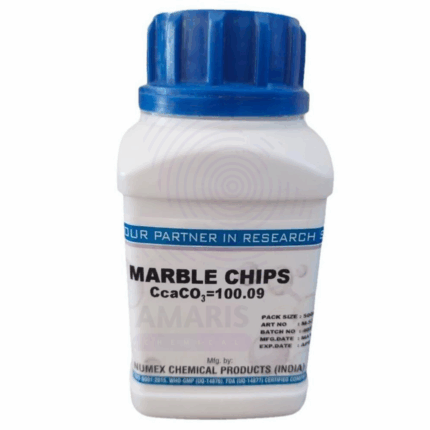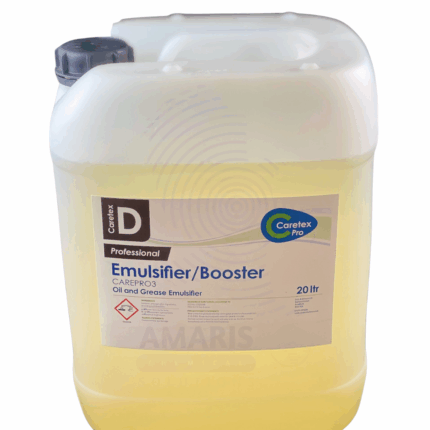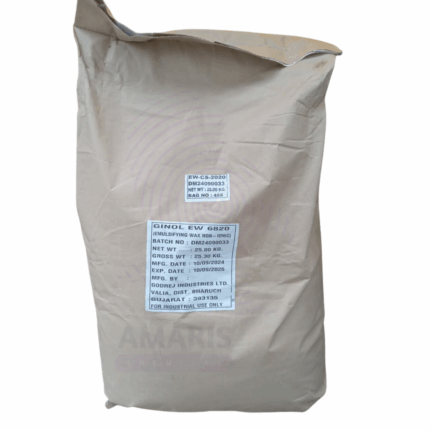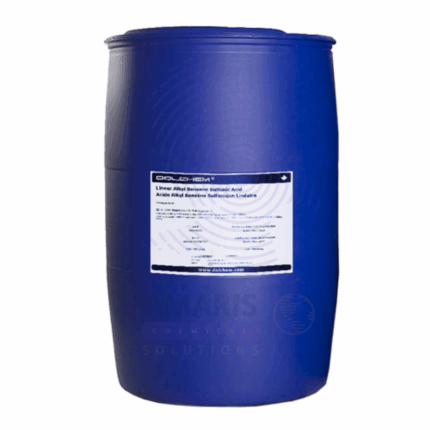

Detergent Compound
Detergent Compound is a formulated blend of surfactants, builders, fillers, enzymes, and other additives designed to provide superior cleaning performance in various household, institutional, and industrial cleaning applications. Supplied as a free-flowing powder or granules, it dissolves quickly in water to effectively remove dirt, oils, grease, and stains from fabrics, dishes, and surfaces. The compound balances cleaning power, foaming, water softening, and fabric care through a combination of synthetic surfactants (anionic, nonionic), builders (such as sodium carbonate, zeolites), enzymes for stain degradation, optical brighteners, anti-redeposition agents, and fragrance. This versatile base material is essential for laundry detergents, dishwashing powders, and multipurpose cleaning formulations.
Detergent Compound Uses
- Primary Uses
- Laundry Cleaning
- Base ingredient for powder laundry detergents in household and commercial washing applications.
- Removes protein, starch, and fat-based stains with enzymatic action.
- Prevents redeposition of dirt, maintaining fabric brightness and softness.
- Compatible with both hand washing and automatic washing machines.
- Dishwashing and Utensil Cleaning
- Used in powdered dishwashing detergents to emulsify and remove grease and food residues.
- Provides effective foaming and rinsing properties, minimizing spotting on glassware.
- Household Surface Cleaning
- Incorporated into multipurpose cleaning powders for floors, tiles, kitchens, and bathrooms.
- Helps eliminate soap scum, dirt, and grime while providing a fresh fragrance.
- Industrial & Institutional Cleaning
- Utilized in heavy-duty detergents for hospitals, hotels, laundromats, and food processing plants.
- Supports textile, kitchen, and machinery cleaning with high efficiency and ease of rinsing.
Secondary Uses
- Specialty Cleaning Products
- Base for automotive degreasers, carpet shampoos, and other niche formulations.
- Agricultural Uses
- Occasionally used as surfactant adjuvants in agrochemical formulations to improve efficacy.
- Basic Identification Attributes
- Product Name: Detergent Compound
- Form: Powder or granular blend
- Typical Composition: Surfactants (anionic, nonionic), builders, fillers, enzymes, fragrances, brighteners
- Packaging: 25 kg bags, cartons, or bulk containers as required
- Color & Odor: Off-white to pale colored powder; characteristic detergent fragrance
- Synonyms:
- Washing Powder Base
- Detergent Base Powder
- Laundry Detergent Compound
- Cleaning Compound
- Powdered Detergent Blend
- Synthetic Detergent Mix
- Surfactant Blend Powder
- Cleaning Agent Powder
- Physical & Chemical Properties
- Appearance: Free-flowing powder or granules
- pH (1% aqueous solution): Typically alkaline, 9–11
- Solubility: Readily soluble/dispersible in water
- Bulk Density: 400–700 kg/m³ (varies by formulation)
- Stability: Stable under normal storage; sensitive to moisture and humidity
- Foaming: High foaming ability depending on surfactant content
- Cleaning Efficiency: Effective against organic/inorganic soils
- Safety & Hazard Attributes
- Hazard Classification (GHS): Generally irritant, category 2 (eye irritant)
- Skin Contact: May cause mild irritation on prolonged exposure
- Eye Contact: Causes serious eye irritation; immediate rinsing required
- Inhalation: Dust may irritate respiratory tract; avoid inhalation
- Toxicity: Low oral toxicity; not for ingestion
- Storage & Handling Attributes
- Storage Conditions: Cool, dry, ventilated area away from moisture and sunlight
- Packaging: Moisture-proof bags or containers with resealable features
- Shelf Life: 12–24 months under proper storage
- Handling Precautions: Use PPE (gloves, dust mask, goggles) when handling bulk powder
- Avoid dust generation; mechanical aids recommended for handling large bags
- Regulatory & Compliance Attributes
- Regulatory Status: Compliant with EPA, REACH, FDA, and local detergent regulations
- Biodegradability: Surfactants and builders generally readily biodegradable
- Labelling: Must include hazard and safety warnings and ingredient declaration
- Transport: Non-hazardous but labeled as irritant material
- Environmental & Health Impact
- Biodegradability: High; minimal environmental persistence
- Ecotoxicity: Low to moderate aquatic toxicity depending on surfactant type
- Sustainability: Increasing use of bio-based surfactants and phosphate-free builders
- Health Impact: Safe with proper use and handling; avoid prolonged skin contact or dust inhalation
Safety Handling Precautions
- PPE Recommended:
- Dust mask or respirator for bulk powder handling
- Chemical-resistant gloves
- Safety goggles or face shield
- Handling Instructions:
- Minimize dust formation
- Use mechanical aids for lifting and transfer
- Wash hands after handling
- Storage Guidelines:
- Keep containers tightly closed and dry
- Store away from acids and oxidizers
- Hygiene Practices:
- No eating, drinking, or smoking during handling
- Use in well-ventilated areas
First Aid Measures
- Inhalation: Move to fresh air; seek medical attention if irritation or difficulty breathing persists
- Skin Contact: Wash thoroughly with soap and water; remove contaminated clothing
- Eye Contact: Rinse immediately with water for at least 15 minutes; seek medical attention
- Ingestion: Rinse mouth; do not induce vomiting; seek medical advice if symptoms occur
Firefighting Measures
- Fire Hazard: Non-flammable; dust may pose explosion hazard in confined spaces
- Extinguishing Media: Water spray, foam, dry chemical, CO₂
- Special Precautions: Avoid dust dispersion during firefighting
Combustion Products: May release carbon oxides and sulfur oxides depending on composition


 Preservatives(food)
Preservatives(food) Flavor Enhancers
Flavor Enhancers Acidulants
Acidulants Sweeteners
Sweeteners Antioxidants
Antioxidants Colorants(food)
Colorants(food) Nutraceutical Ingredients (food)
Nutraceutical Ingredients (food) Nutrient Supplements
Nutrient Supplements Emulsifiers
Emulsifiers
 Collectors
Collectors Dust Suppressants
Dust Suppressants Explosives and Blasting Agents
Explosives and Blasting Agents Flocculants and Coagulants
Flocculants and Coagulants Frothers
Frothers Leaching Agents
Leaching Agents pH Modifiers
pH Modifiers Precious Metal Extraction Agents
Precious Metal Extraction Agents
 Antioxidants(plastic)
Antioxidants(plastic) Colorants (Pigments, Dyes)
Colorants (Pigments, Dyes) Fillers and Reinforcements
Fillers and Reinforcements Flame Retardants
Flame Retardants Monomers
Monomers Plasticizers
Plasticizers Polymerization Initiators
Polymerization Initiators Stabilizers (UV, Heat)
Stabilizers (UV, Heat)
 Antifoaming Agents
Antifoaming Agents Chelating Agents
Chelating Agents Coagulants and Flocculants
Coagulants and Flocculants Corrosion Inhibitors
Corrosion Inhibitors Disinfectants and Biocides
Disinfectants and Biocides Oxidizing Agents
Oxidizing Agents pH Adjusters
pH Adjusters Scale Inhibitors( water)
Scale Inhibitors( water)
 Antioxidants(cosmetic)
Antioxidants(cosmetic) Emollients
Emollients Fragrances and Essential Oils
Fragrances and Essential Oils Humectants
Humectants Preservatives
Preservatives Surfactants(cosmetic)
Surfactants(cosmetic) Thickeners
Thickeners UV Filters
UV Filters
 Fertilizers
Fertilizers Soil Conditioners
Soil Conditioners Plant Growth Regulators
Plant Growth Regulators Animal Feed Additives
Animal Feed Additives Biostimulants
Biostimulants Pesticides (Herbicides, Insecticides, Fungicides)
Pesticides (Herbicides, Insecticides, Fungicides)
 Active Pharmaceutical Ingredients (APIs)
Active Pharmaceutical Ingredients (APIs) Excipients
Excipients Solvents(pharmaceutical)
Solvents(pharmaceutical) Antibiotics
Antibiotics Antiseptics and Disinfectants
Antiseptics and Disinfectants Vaccine Adjuvants
Vaccine Adjuvants Nutraceutical Ingredients (pharmaceutical)
Nutraceutical Ingredients (pharmaceutical) Analgesics & Antipyretics
Analgesics & Antipyretics
 Analytical Reagents
Analytical Reagents Solvents(lab)
Solvents(lab) Chromatography Chemicals
Chromatography Chemicals Spectroscopy Reagents
Spectroscopy Reagents microbiology-and-cell-culture-reagents
microbiology-and-cell-culture-reagents Molecular Biology Reagents
Molecular Biology Reagents Biochemical Reagents
Biochemical Reagents Inorganic and Organic Standards
Inorganic and Organic Standards Laboratory Safety Chemicals
Laboratory Safety Chemicals Specialty Laboratory Chemicals(Special Laboratory Equipment)
Specialty Laboratory Chemicals(Special Laboratory Equipment)
 Demulsifiers
Demulsifiers Hydraulic Fracturing Fluids
Hydraulic Fracturing Fluids Scale Inhibitors(oil)
Scale Inhibitors(oil) Surfactants(oil)
Surfactants(oil) Drilling Fluids
Drilling Fluids
 Dyes and Pigments
Dyes and Pigments Bleaching Agents
Bleaching Agents Softening Agents
Softening Agents Finishing Agents
Finishing Agents Antistatic Agents
Antistatic Agents
 Admixtures
Admixtures Waterproofing Agents
Waterproofing Agents Sealants and Adhesives
Sealants and Adhesives Curing Compounds
Curing Compounds Concrete Repair Chemicals
Concrete Repair Chemicals Anti-Corrosion Coatings
Anti-Corrosion Coatings
 Surfactants(cleaning)
Surfactants(cleaning) Builders
Builders Enzymes
Enzymes Solvents (Cleaning)
Solvents (Cleaning) Fragrances
Fragrances
 Electronic Chemicals
Electronic Chemicals Catalysts
Catalysts Lubricants
Lubricants Photographic Chemicals
Photographic Chemicals Refrigerants
Refrigerants Automotive chemicals
Automotive chemicals Pyrotechnic Chemicals
Pyrotechnic Chemicals
 Biodegradable Surfactants
Biodegradable Surfactants Bio-based Solvents
Bio-based Solvents Renewable Polymers
Renewable Polymers Carbon Capture Chemicals
Carbon Capture Chemicals Wastewater Treatment Chemicals
Wastewater Treatment Chemicals
 Pigments
Pigments Solvents(paint)
Solvents(paint) Specialty Coatings
Specialty Coatings Binders/Resins
Binders/Resins Additives
Additives Driers
Driers Anti-Corrosion Agents
Anti-Corrosion Agents Functional Coatings
Functional Coatings Application-Specific Coatings
Application-Specific Coatings
 Fresh Herbs
Fresh Herbs Ground Spices
Ground Spices Whole Spices
Whole Spices Spice Blends
Spice Blends Dried Herbs
Dried Herbs
 Leavening Agents
Leavening Agents Dough Conditioners
Dough Conditioners Flour Treatments
Flour Treatments Fat Replacers
Fat Replacers Decoratives
Decoratives Preservatives(baking)
Preservatives(baking)
 Plasticizers & Softeners
Plasticizers & Softeners Reinforcing Agents
Reinforcing Agents Adhesion Promoters
Adhesion Promoters Vulcanizing Agents
Vulcanizing Agents Antidegradants
Antidegradants Blowing Agents
Blowing Agents Fillers & Extenders
Fillers & Extenders Accelerators & Retarders
Accelerators & Retarders






















